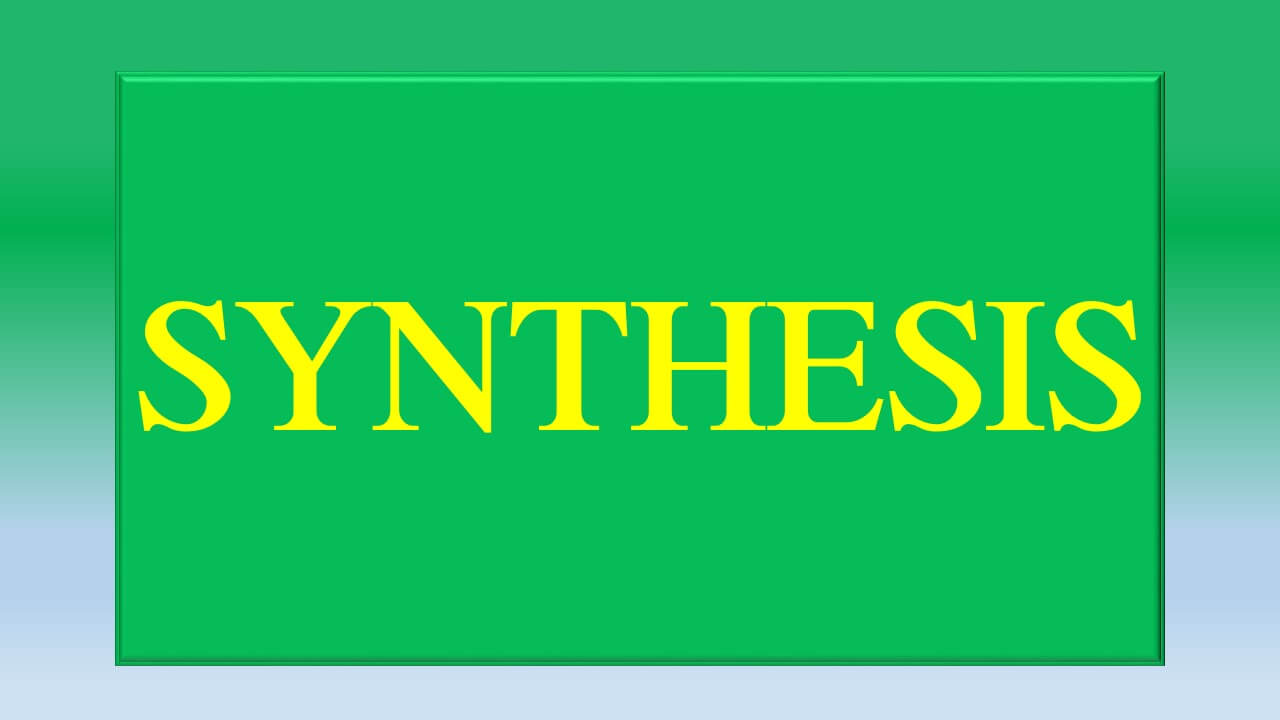Table of Contents
SYNTHESIS
एकमेकांशी संबंध असलेली दोन किवा अधिक केवलवाक्ये एकत्र करून त्यांचे एक
केवल/मिश्र/संयुक्त वाक्य बनविणे यालाच वाक्याचे एकीकरण किवा संकलन असे
म्हणतात.
– वाक्य संकलन तीन प्रकारचे असते.
1. दोन किंवा अनेक केवलवाक्यांचे एक केवलवाक्य बनविणे.
ex. Rahul worked hard. He stood first in the examination.
Working hard Rahul stood first in the examination.
२.दोन किवा अनेक केवलवाक्यांचे एक मिश्रवाक्य बनविणे.
ex. Rahul worked hard. He would stand first in the
examination.
– Rahul worked hard so that he would stand first in the
examination. .
३.दोन किंवा अनेक केवलवाक्यांचे एक संयुक्तवाक्य बनविणे.
ex Nikita reads Hindi. she reads English, too.
Nikita reads Hindi and she reads English, too.
खालील काही वाक्यांचे संयोगीकरण करून दाखविले आहे प्रत्यक्ष सरावमधून त्यांचे
नियम शिका.
SYNTHESIS
combine the following pairs of sentences into one simple or
complex or compound sentence each as directed.
(खालील वाक्यांच्या जोडीचे सूचविल्याप्रमाणे एक केवलवाक्यात किंवा मिश्रवाक्यात किंवा
संयुक्तवाक्यात रूपांत करा)
SYNTHESIS
1) not only……but also चा वापर करूनः
1) he tended his plants. he laboured over his task.(use’ not
only….but also’)
He not only tended his plants but also laboured over
his task.
टिपः not only….but also चा वापर करून दोन केवल वाक्यांचे एक वाक्य बनविताना
अ. पहिल्या वाक्यातील असमान भागापूर्वी not only चा वापर करतात.
ब. दुसया वाक्यातील असमान भागापूर्वी but also चा वापर करतात.
क.दोन्ही वाक्यातील समान कर्त्याबद्दल पहिल्या वाक्यातील कर्ता घ्यावा. पहिल्या
वाक्यात नामवाचक कर्ता असेल तर तोच कर्ता घ्यावा.
2) Shankar and parvati are my neighbours. they are also
good friends.
Ans:Shankar and parvati are not only my neighbours but also
good friends.
टिपः a) पहिल्या वाक्यातील कर्ता Shankar and Parvati आणि दुसया वाक्यातील
कर्ता they अभिन्न आहेत. अशावेळी पहिल्या वाक्यातील नामवाचक कर्ता Shankar and
Parvati याचा वापर आपण केलेला आहे.
b) दुसया वाक्यात आलेला सुध्दा या अर्थाचा also किंवा too काढून टाकतात.
3) Yasapani was known for his great welath, he was known
for his great military power, too.
Ans: Yasapani was known not only for his great wealth but also
for his great military power.
4) Theplayers were tired. They were thirsty, too.
Ans: The players were not only tired but also thirsty.
Seeta plays cricket. She plays tennis, too.
Ans: Seeta plays not only cricket but also tennis.
SYNTHESIS
2.Presentparticiple चा वापर करून
1) He heard sound. he workup.(rewrite by using hearing’)
Ans: Hearing sound he woke up.
टिप:a) दोन केवल वाक्याचे एक केवलवाक्य बनविले. वाक्याचे पहिले अक्षर पहिल्या
लिपीत लिहिले.
b) पहिल्या वाक्यातील क्रियापद heard आहे त्याचे वर्तमानकाळी रूप hear
(पहिले रूप) आहे. hear चे present participle: hearing वाक्याच्या
सुरूवातीस वापरून पहिल्या वाक्यातील कर्त्याचा लोप केला.
2) He is honest, he will not adopt unfair means.
Ans: Being honest he will not adopt unfair means.
.
टिपः is हे to be चे रूप आहे त्याचे present participle: being वापरून
पहिल्या वाक्यातील कर्त्याचा लोप केला.
iii) He looked atme. he smiled. .
Ans: looking at me he smiled.
टिप: looked चे वर्तमानकाळी रूप look असून, looking त्याचे present
participle आहे. looking चा वापर वाक्याच्या सुरवातीस करून पहिल्या l
वाक्याच्या काचा लोप केला.
4) he adopted unfair means. he became rich.
Ans: Adopting unfair means he became rich.
5) Moga heard the long expected question. he was happy.
Ans: hearing the long expected question Moga was happy.
SYNTHESIS
3) Infinitive चा वापर करून :
1) Moga heard the long expected question. he was
happy.(use to hear’)
Ans: Moga was hapy to hear to long expected question.
heard चे to hear हे infinitive आहे.
b) infinitive पुर्वीचा कर्ता Moga चा वापर he च्या जागी करून Moga
was happy हे दुसरे वाक्य सुरूवातीला योजून infinitive पासून
predicate त्यांतन लिहिले.
2) The animals saw him all alone on the bank of the river.
They were surpirsed. (use to see’)
Ans: The animals were surprised to see him all alone one the
bank of the river.
a) to see हे saw चे infinitive आहे . see हे वर्तमानकाळी रूप आहे.
b) दुसया वाक्याचा कर्ता they हा the animals या कर्ता वापरला. दुसरे वाक्य
प्रथम योजून त्यानंतर Infinitive पासूनचे पहिल्या वाक्यातील predicate
लिहिले.
SYNTHESIS
4.neither……nor चा वापर करून
1) Arthur didn’t know how wicked Burnwell was. You also
didn’t knowit. (use “neither……..nor’)
Ans: Neither Arthur nor you knew how wicked Burnwell was.
टिपः neither…..nor चा वापर करताना मूळ वाक्यातील नकारात्मक शब्द काढून
टाकतात.
b) not चा लोप करताना did चाही लोप होतो. कारण did हे सहाय्यकारी क्रियापद
येथे नकारार्थी वाक्य तयार करण्यासाठी वापरलेले आहे. did भूतकाळी आहे,
म्हणून didn’tknow चे होकारार्थी रूप knew घेतले.
c) पहिल्या वाक्यातील असमान भागापूर्वी neither व दुसया वाक्यातील असमान
भागापूर्वी nor चा वापर केला subject हा दोन्ही वाक्यातील असमान भाग आहे.
d) दोन्ही वाक्यातील subject अभिन्न आहेत त्यामुळे पहिल्या वाक्यातील
predicate कायम ठेवून दुसया वाक्यातील predicate चा लोप केला.
